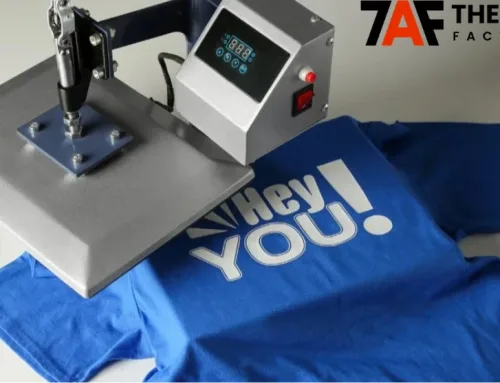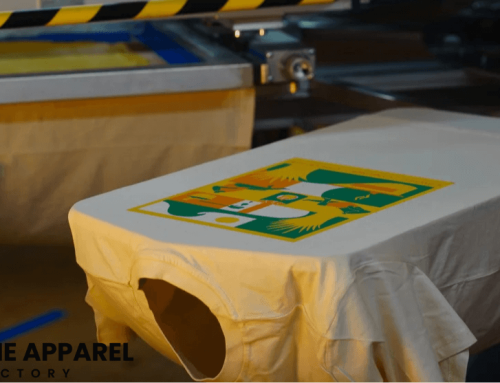
A shirt that fits poorly can become a wardrobe favorite by shrinking it. You can get the ideal fit whether you’re shrinking a cotton shirt, a sweatshirt, or a dress shirt by knowing how to shrink apparel correctly.
A lot of individuals inquire, “How to shrink clothes without ruining the design?” and “best way to shrink clothes?” This detailed blog will provide extensive guidance that will help you safely and effectively shrink your shirts.
Knowing how to shrink a shirt is valuable for both personal and professional reasons. For individuals, it makes sure that your clothes fit perfectly, improving your overall appearance and comfort.
For business owners in the apparel industry, understanding fabric shrinkage can improve product offerings and customer satisfaction. By providing tips on how to shrink apparel, businesses can help customers get the most out of their purchases, potentially increasing sales and customer loyalty.
When sourcing bulk and customized apparel, consider The Apparel Factory. We are the leading vendor known for high-quality garments. Business owners can leverage their knowledge of shrinking techniques to offer additional services or advice, making sure customers achieve their desired fit. This expertise can set your business apart in a competitive market.
3 Best Ways to Shrink a Shirt (with Precautions, Tips, and Instructions)
When it comes to how to shrink a shirt, different methods offer varying degrees of control and effectiveness.
Below are three of the methods that are best ways to shrink clothes or, specifically, a shirt, each with particular safety measures and advice to ensure the greatest outcomes without causing harm to the fabric:
- Method #1: How to Shrink a Shirt with Hot Water?
- Potential Risks and How to Avoid Them While Shrinking
- Method #2: How to Shrink Your Shirt with a Dryer
- Method #3: How to Shrink a Shirt with an Iron?
Method #1: How to Shrink a Shirt with Hot Water?
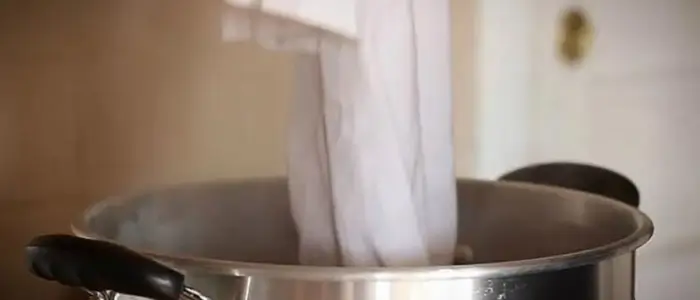
The hot water method is highly effective for shrinking shirts, especially those made from cotton. Start by preparing a basin filled with hot water, ideally around 120°F. It’s important to ensure the water is hot but not boiling, as excessive heat can lead to over-shrinkage and potential damage to the fabric.
Submerge the shirt completely in the hot water and let it soak for 5 to 20 minutes, depending on how much you want it to shrink. The heat from the water relaxes the fibers of the fabric, allowing them to contract and reduce in size.
After soaking, carefully remove the shirt from the water and gently wring out excess water. Avoid squeezing too forcefully to prevent stretching or damaging the fabric.
Next, transfer the shirt to a dryer set on high heat. Dry the shirt until it is completely dry. The combination of hot water and high heat from the dryer encourages the fabric fibers to contract further, achieving a more fitted look.
This method effectively uses both water and heat to shrink the shirt to your desired size. However, it’s important to keep your eyes on the shirt closely during the drying process to prevent over-shrinking.
Check the shirt’s fit and size periodically while drying, adjusting the drying time if needed to achieve the desired level of shrinkage without compromising the shirt’s quality or fit.
Also, If you’re trying to shrink your clothes, especially if they’re made of cotton, you have to be careful not to go overboard. Cotton shrinks easily, so don’t use water that’s too hot, and keep an eye on your clothes while they’re drying. You don’t want to end up with something that’s too small or mess up the fabric.
When you’re washing your delicate clothes, like silk or wool, it’s better to use a warm setting or just let them air dry after you have given them a quick dip in hot water. This way, you won’t mess up the material, but you’ll still get them to shrink a bit if that’s what you’re going for.
To make sure that the method is suitable for your specific garment, it’s prudent to conduct a preliminary test on a less valuable piece of apparel. This test will provide insights into the potential extent of shrinkage and help you adjust the process accordingly for your more delicate items.
Method #2: How to Shrink Your Shirt with a Dryer

Using a dryer to shrink a shirt is a straightforward and effective method that works well for most fabrics, especially cotton and blends.
Firstly, grab your shirt and spin it in the wash with some hot water. This is super important because that heat is going to cause the material to shrink. Just run it through a normal wash cycle, and you’re good to go.
Once you’re done washing your shirt, just spin it straight into the dryer. Crank up the heat when you set the cycle because it’s that hot air that’s going to make the cotton in your shirt tighten up and shrink down to the size you want.
It’s important to let the shirt dry completely in the dryer to achieve maximum shrinkage. This ensures that the fabric fibers have contracted as much as possible.
Throughout the drying process, it’s advisable to monitor the shirt closely to prevent over-shrinking. Using timed drying cycles can help you keep track of the progress and ensure that the shirt doesn’t shrink beyond your desired size.
By following these steps, you can effectively shrink your shirt to achieve a perfect fit. Whether you’re dealing with a cotton shirt or a blend, the dryer’s high heat and thorough drying are key factors in shrinking the fabric. This method is simple yet effective, allowing you to adjust the size of your shirt to better suit your needs, and you would not be in a wondering stage of how to shrink a shirt.
Also, there are some precautions to prevent your shirt from shrinking too much. Like, it’s important to monitor the drying process closely. Use timed drying cycles so you can check on the shirt regularly. This helps you control the amount of shrinkage, ensuring it doesn’t become uncomfortably small while maintaining its original fit and comfort.
For more delicate fabrics or when you want to be extra cautious, opt for a lower heat setting on your dryer and extend the drying time. This gentler approach reduces the risk of damaging the fabric while still achieving some shrinkage. It’s also crucial to consider the type of fabric you’re dealing with. Cotton shirts generally tolerate higher heat settings well, but polyester and blends may require a more moderate heat to prevent damage or distortion.
By following these precautions, you can successfully shrink your shirt to achieve the desired fit without compromising its quality. This method allows you to customize your clothing to your liking while preserving its durability and appearance over time.
Method #3: How to Shrink a Shirt with an Iron?

Shrinking a shirt can be done easily using an iron. First, spray the areas you want to shrink with water. Then, set your iron to the right heat setting for the fabric. Iron the damp areas with gentle pressure, focusing on parts that need more shrinkage.
This method allows you to adjust the fit of the shirt without changing its overall appearance. Be careful not to overheat or over-iron the shirt. Let it cool down after ironing to set the fabric in its new shape.
By following these steps, you can resize your shirts for a more personalized and comfortable fit. It may take some practice, but you can master this method to resize different types of shirts according to your body shape and style preference.
3 Methods to Shrink a Shirt with Different Fabric Types
Before being confused regarding how to shrink a shirt and before attempting to shrink a shirt without legitimate information, it’s important to identify the fabric type. Different materials like cotton, polyester, and blends respond differently to heat and water, making it important to use the correct method to avoid damage and achieve even shrinkage.
- Cotton Shrinking
- Polyester Shrinking
- Blends
1. Shrinking Cotton Shirts

Cotton’s comfort and breathability make it a very popular fabric. However, one of its unique characteristics is that it shrinks easily, especially in the presence of heat and water. Cotton shirts shrink easily as a result, but handling them carefully is necessary to prevent over-shrinking.
The first step in shrinking a cotton shirt is to wash it in hot water. Shrinkage will result from the heat’s effect on the fibers’ contraction. After you have washed your shirt, just spin it in the dryer in the hot setting.
Keep an eye on it, though, because it can shrink in weird ways if you’re not careful. If you want to play it safe, you can also try soaking the shirt in hot water for about 20 minutes before you dry it. That usually gives you a bit more control over the shrinkage.
When shrinking a cotton shirt, avoid using boiling water, as it can cause excessive shrinkage.
Using medium heat in the dryer can help prevent over-shrinking and preserve the shirt’s design. This approach ensures that your cotton shirt fits perfectly without compromising its integrity.
2. Polyester Shrinking
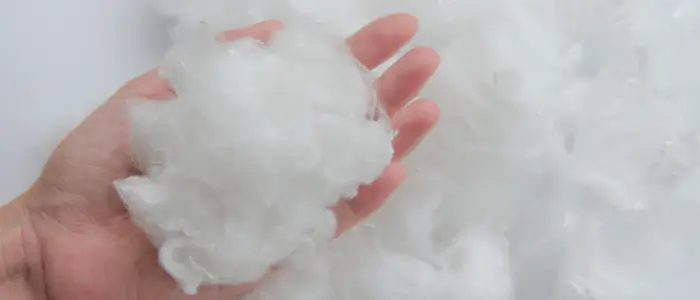
Polyester is pretty tough and great at fighting off wrinkles, but unlike cotton, it doesn’t shrink up without a bit of effort. If you’re looking to get it to shrink, there’s a way to do it. Just remember, polyester can shrink when it gets hot, but you’ve got to be gentle with it so you don’t mess it up.
This easy trick will work if you have a polyester shirt that is a size too big and you want to try shrinking it. Simply throw it in the washer and use hot water. Once finished, immediately place it in the dryer on the highest heat setting available. Don’t let it sit. Store it inside until it dries completely. This should aid in its slight shrinkage. Just a heads up, though: polyester can get destroyed if it gets too hot for too long, so take care not to overdo the heat.
For a more targeted approach, you can use an iron. Dampen the shirt, set the iron to a suitable heat setting for polyester, and iron the shirt, focusing on areas that need more shrinkage. This method allows for more precise control but requires careful attention to avoid damaging the fabric.
3. Blends Shirking
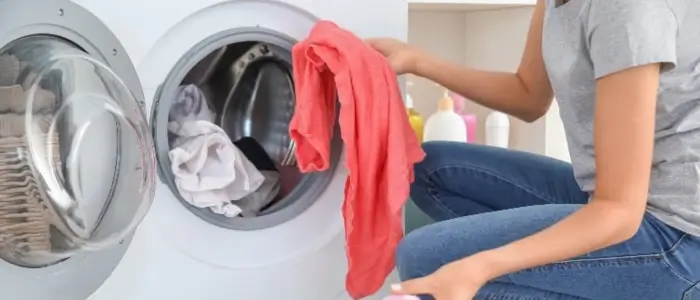
Fabric blends, such as cotton-polyester, combine the best qualities of both materials but also present unique challenges when it comes to shrinking. These blends have high shrinkability but require a balanced approach to avoid damaging either component.
To shrink a blended fabric shirt, use a combination of methods suitable for both fabrics.
Start by washing the shirt in warm water to avoid excessive shrinkage of the cotton fibers. After washing, dry the shirt on medium heat to ensure both the cotton and polyester components shrink evenly.
For more precise control, you can use a combination of hot water soaking and ironing. Soak the shirt in hot water for about 10-15 minutes, then dry it on medium heat. If specific areas need more shrinkage, use an iron with a suitable heat setting for the blend and apply gentle pressure while ironing.
How to Maintain Shirt Quality After Shrinking?
After successfully shrinking your shirt, maintaining its quality is crucial. Proper care routines will help keep the shirt’s new size and prevent further unwanted shrinkage.
Post-Shrink Care Tips
Once you’ve shrunk your shirt to the perfect size, it’s important to keep it looking great with the right care routine. When washing, use cold or lukewarm water to prevent any further shrinkage. This is especially important for cotton and other natural fibers that tend to shrink.
Choose a mild detergent designed for delicate fabrics to protect the fabric and maintain its quality over time. Avoid harsh detergents that can damage the fibers and cause premature wear.
When it comes to drying, air drying is ideal to minimize heat exposure and preserve the shirt’s fit. If you prefer using a dryer, settle a low or medium-heat setting to prevent any unintended shrinkage from high temperatures.
By following these simple care tips, washing in cooler water, using a gentle detergent, and drying with care, you can ensure your shirt stays in top shape and continues to fit perfectly wash after wash. Taking these precautions not only maintains the shirt’s integrity but also prolongs its life for long-lasting comfort and style.
Drying Tips
Proper drying methods are just as important as washing. Whenever possible, set air drying instead of machine drying. Air drying is gentler on the fabric and helps maintain the shirt’s shape and size. If you must use a dryer, use the lowest heat setting and remove the shirt while it’s still slightly damp to finish drying flat.
Best practices for hanging or laying flat to dry include avoiding direct sunlight, which can cause fading and using padded hangers to prevent shoulder bumps. These drying tips help preserve the shirt’s quality and fit.
Many people wonder how to shrink a shirt without ruining the design. The best way to shrink a shirt involves careful control of heat and water. To shrink clothes, especially a cotton shirt, wash it in hot water and then dry it on medium heat. Wondering how to shrink a cotton shirt effectively? Use boiling water for the initial wash cycle. This method also works for how to shrink a sweatshirt.
To shrink a dress shirt or other clothes, start with cold water to prevent initial shrinking, then gradually increase to hot water if needed. Medium heat in the washer and dryer can help ensure the perfect fit. By following these drying and shrinking techniques, you not only extend the life of your shirt but also maintain its original fit, color, and overall appearance. Proper care ensures your dress shirts look and feel their best wear after wear.
Avoiding Further Unwanted Shrinkage
Once you have shrunk your apparel successfully to achieve a perfect fit, it’s very important to take steps to prevent any further unwanted shrinkage and maintain this new size. Handling different fabric types post-shrinking requires specific care to ensure their longevity and continued fit.
For natural fibers like cotton, which tend to shrink, continue washing them in cold or lukewarm water to prevent additional shrinkage. Use a gentle detergent formulated for delicate fabrics to protect the fibers and avoid damage over time. Harsh detergents can weaken the fabric and contribute to further shrinkage, so choosing a mild option is important.
When drying your clothes, air-drying is the gentlest method to maintain their size and shape. If you prefer using a dryer, set a low or medium heat setting to minimize heat exposure. High heat can cause fibers to contract, especially in natural materials like cotton, leading to unwanted shrinkage.
For synthetic fabrics such as polyester or blends, follow the care label instructions carefully. These materials often require gentle handling and lower temperatures to preserve their shape and size. Avoid too much heat during drying to prevent potential damage and maintain the garment’s intended fit.
Establishing a regular care routine is fundamental for keeping your clothes looking their best post-shrinkage. Always check the care labels for specific instructions made to each garment. By treating your clothes with care using appropriate water temperatures, gentle detergents, and suitable drying methods, you can make sure they retain their newly sized fit and remain comfortable wear after wear.
By adopting these practical measures and maintaining a consistent care routine, you can effectively manage your clothes post-shrinkage, prolonging their lifespan and preserving their appearance and fit for the long term.
Customizing Your Shirt After Shrinking
Customizing your shirt after shrinking can give you a perfect fit while adding a personal touch, which is particularly advantageous for businesses. Shrinking a shirt, whether it’s a cotton t-shirt or a dress shirt, can be done using methods involving water and heat, such as boiling water or using a washer and dryer.
Once you achieve the desired fit, adding logos and designs can turn these shirts into effective branding tools. Custom shirts serve as walking advertisements, enhancing brand visibility and creating a professional image when used as uniforms, promotional items, or merchandise.
At The Apparel Factory, we specialize in providing customization services tailored to your specific needs. We understand the importance of maintaining design integrity during the shrinking process, ensuring that logos and artwork stick properly to the resized fabric. Using methods like screen printing, embroidery, and laser etching for large batches and digital printing for intricate designs, we ensure high-quality results. Our expertise ensures that whether you’re shrinking a sweatshirt or a cotton shirt, your custom designs remain vibrant and durable.
Customized shirts significantly enhance brand identity and visibility. They foster a sense of unity and professionalism among employees and leave a positive impression on customers.
High-quality, well-fitted custom apparel not only promotes your brand effectively but also associates it with quality and attention to detail. By choosing The Apparel Factory for your customization needs, you ensure that your brand is seen and remembered through expertly customized apparel that resonates with your audience.
How to Shrink a Shirt – FAQs
Can you shrink a shirt without washing it?
Yes, it’s not a big deal if you know the right method for shrinking a shirt. You can shrink a shirt using iron and water without a full wash cycle.
Will shrinking a shirt damage the fabric?
It can if not done carefully. Always follow fabric care instructions and use appropriate heat settings.
How many times can you shrink a shirt?
Sure, you can usually make a shirt smaller once or twice before the fabric starts to wear out. After that, it might not hold up as well. So, if you need to shrink your shirt, it’s best to do it gradually and not too often. This way, you can keep your shirt looking good for longer.
Is it possible to reverse the shrinkage?
Yes, it can return to its original size by soaking in water and gently stretching, but it may not completely return.
Conclusion
How to shrink a shirt and maintain its quality involves a blend of careful techniques and regular maintenance. Customizing your shirts post-shrinking can enhance both personal style and brand visibility. By following the detailed steps and tips provided, you can achieve and sustain the perfect fit while adding a personalized touch to your apparel.
Published on:
July 2, 2024




